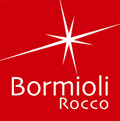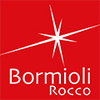When celebrating life's special moments or adding a touch of luxury to an ordinary day, few beverages can match the effervescent charm of Champagne and sparkling wines. These celebratory libations have transcended their origins to become symbols of sophistication, joy, and festivity around the globe.
A Journey Through History
Champagne, the undisputed monarch of sparkling wines, has a rich and fascinating history. Its story begins in the picturesque region of Champagne, France, where the unique combination of climate, soil, and grape varieties led to the creation of this iconic beverage. Dom Pérignon, a Benedictine monk, is often credited with the accidental discovery of Champagne in the 17th century. Legend has it that he exclaimed, "Come quickly, I am drinking the stars!" upon tasting the effervescent wine.
Over time, the meticulous process of producing Champagne has evolved into a fine art. The "Méthode Champenoise" involves a second fermentation in the bottle, trapping carbon dioxide and creating those distinctive bubbles. While Champagne is the standard-bearer, sparkling wines from other regions, crafted with the same traditional method or other techniques, have also gained prominence.

Bormioli Roco InAlto Sparkling Wine Flute
Varieties and Styles
It's important to note that while all Champagne falls under the category of sparkling wine, not all sparkling wine can be termed Champagne. The key is viewing Champagne more as a geographical origin than a winemaking style. Any product created even a mere 10 feet beyond the Champagne region in France must, by law, be labeled as "sparkling wine." In various parts of the world, diverse names such as Prosecco, Cava, Sekt, and others are employed for effervescent wines. In the United States, irrespective of grape variety or production method, it is legally mandated to be labeled as sparkling wine—noteworthy domestic sparkling brands like Chandon, Schramsberg, or Roederer hail from California.
Champagne categorizes its sweetness levels into three main types: Brut, Demi Sec, and Doux. These distinctions are defined by the sugar dosage, the quantity of sugar introduced to the wine during the Champagne-making process.
Prosecco, the beloved Italian sparkling wine, is crafted primarily from the Glera grape. Known for its light and fruity profile, Prosecco has become a popular choice for casual celebrations. Made using indigenous grape varieties, Spain's Cava often delivers a crisp and refreshing experience. At the same time, the New World has embraced sparkling wine production, with notable examples from California, Australia, and South America.

Bormioli Rocco Planeo 8.75 Sparkling Wine Flute
The Art of Aging
Champagnes are often labeled as either vintage or non-vintage. Vintage champagnes are made from grapes harvested in a single exceptional year, showcasing the unique characteristics of that particular vintage. On the other hand, non-vintage champagnes are blends of wines from multiple years, ensuring a consistent style that reflects the house's signature.

Bormioli Rocco Restaurant Sparkling Wine Flute
Champagne and sparkling wines are more than beverages; they symbolize joy, elegance, and the art of celebration. So, here's to the tiny bubbles that bring sparkle to our lives—may they continue to effervesce in our glasses and hearts for generations to come. Cheers!


